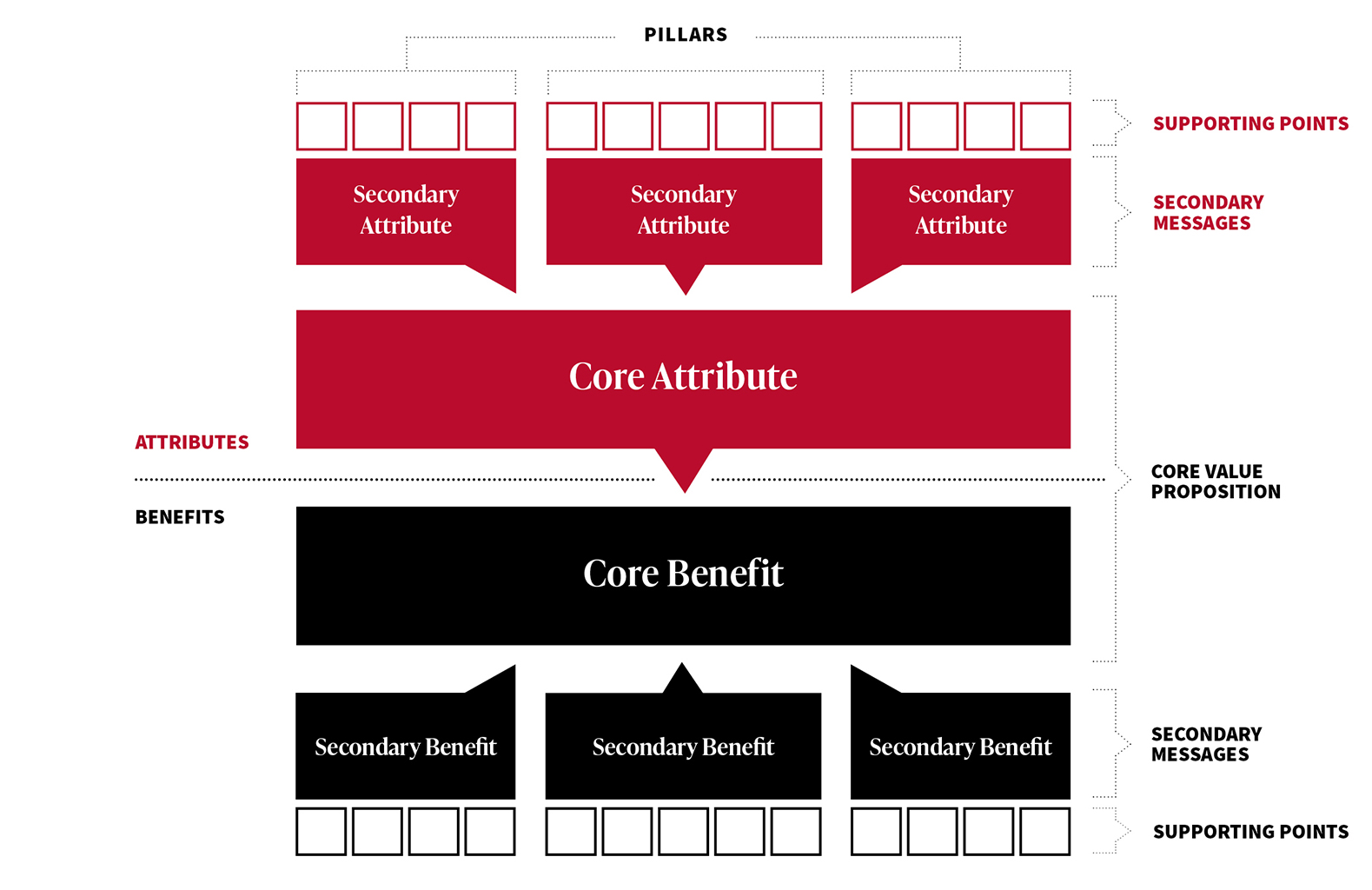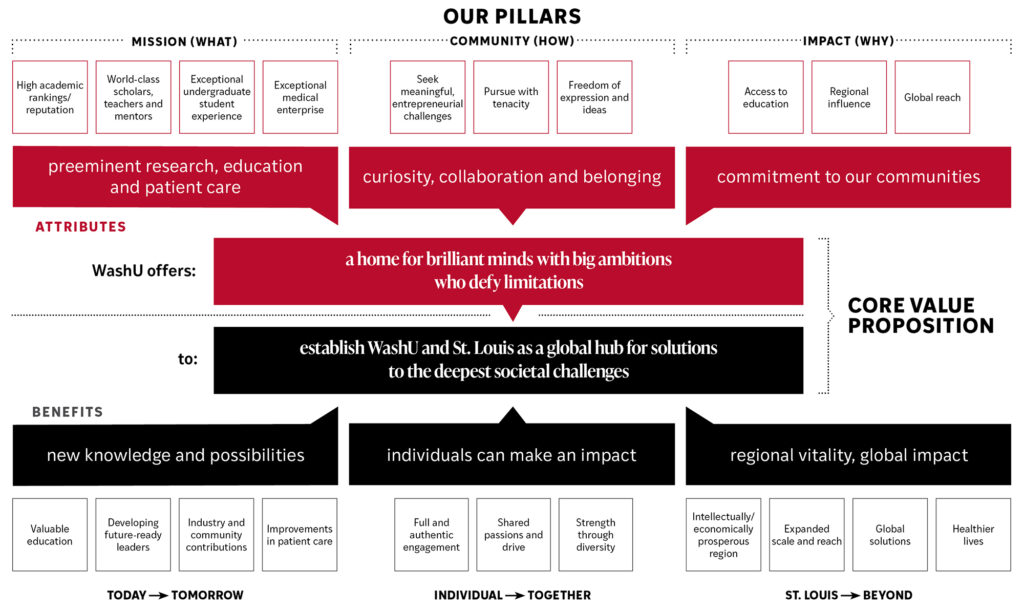Being strategic about your storytelling efforts can ensure that all WashU stories ladder up to the WashU brand.
Audiences
WashU engages with a profoundly diverse collection of audiences and individuals. The brand needs to work differently for each of these very complex segments, but our story should remain consistent. By understanding the objective we’re trying to achieve with each audience segment, we can bring greater focus and clarity to all of our interactions.
Internal
Groups like: Board of Trustees, senior leaders, staff, faculty, current students, volunteers
Brand Objective: Convey the vision to create alignment
Enrollment
Groups like: Prospective students, families, high school counselors, working adults
Brand Objective: Differentiate us from our peers to drive interest
Advancement
Groups like: Alumni, donors, investors, innovators and entrepreneurs, research partners
Brand Objective: Attract partners and secure their support
Reputation
Groups like: Current and future corporate partners and employers; government officials; residents of St. Louis, Missouri, and Southern Illinois; general public; higher ed peers and leaders
Brand Objective: Shape perceptions to influence our reputation
Medical
Groups like: Physicians, health care professionals, patients, donors, partners
Brand Objective: Clarify our offer and build trust
Messaging
The message map prioritizes the most important ideas for telling our story, and it illustrates the relationship between attributes and benefits. While you may need to deliver specific messages that don’t appear on this map, they should always reinforce what’s at its center — our core value proposition — or one of the key secondary messages.
Message map structure

Core Value Proposition
Our brand promise
The core value proposition is the higher-level offer that drives our brand — it’s what WashU is promising to the world.
Attributes
What we offer
An attribute is what we offer to our audiences. Attributes include things like facilities, culture and experiences.
Benefits
Why it matters
A benefit is what our audiences get. It’s the value, outcome or impact of the attributes that we offer.
WashU Message Map

How to use the message map
Our message map is a hierarchy for selecting messages, but it’s not the starting point for crafting content. To get the most out of the map, practice these four steps.
Step 1
Determine your audience objective.
Before you decide what to say, identify whom you’re talking to and what their unique needs are. People care more about your message if it’s relevant to them.
Step 2
Determine the attribute.
Consult the map to align your topic (like undergraduate research) with specific attributes (like seekers of complex challenges). When possible, connect supporting points with a secondary message to strengthen your argument.
Step 3
Determine the benefit.
Once you’ve established that your topic links to a brand attribute, you need to identify the benefit or benefits (like a common passion and drive). Note: In most cases, your audience cares more about the benefit than the attribute.
Step 4
Craft your message.
You may have found one benefit, or you may have found several. You’ll want to narrow your focus to the most important benefit — that’s what you need to get across first. Any supporting benefits should act as talking points, complemented by the attributes of the topic you are promoting.
Pro Tip: Try using the messaging themes to maintain a balanced content calendar. Consider what your audience cares about most and prioritize content from that theme. Just make sure to balance the story with the other themes. For example: St. Louis partners may care most about the impact WashU makes. Therefore, content for partner communications might strive for a balance of 10% mission, 30% community and 60% impact.